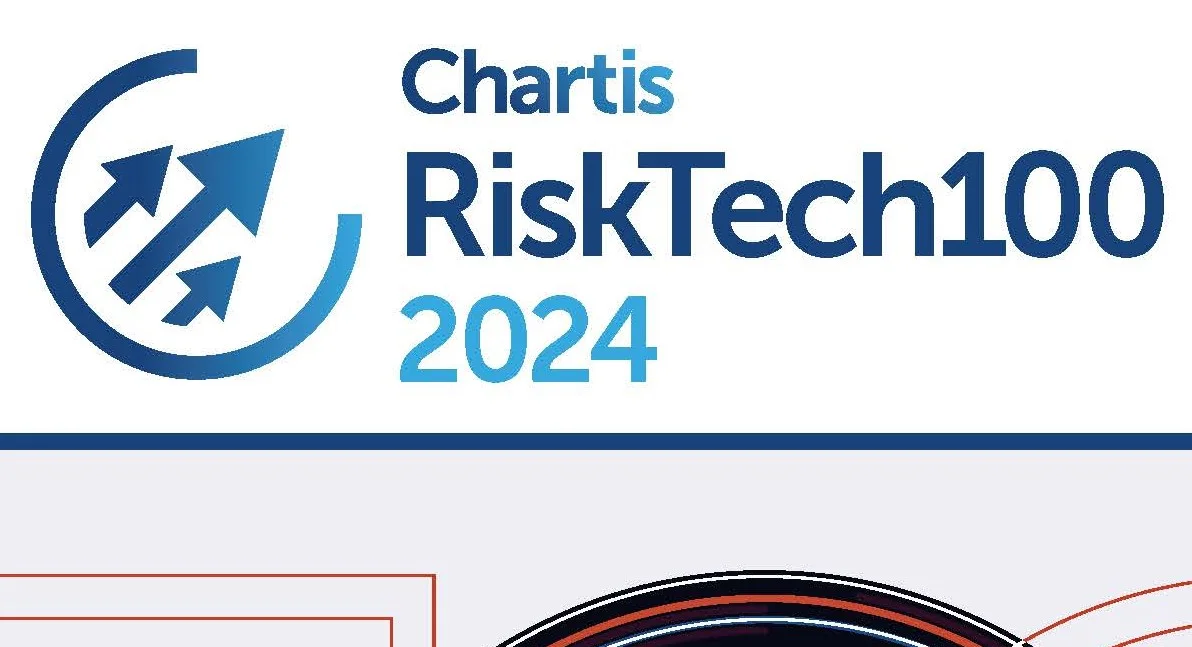RiskTech100 2024 Winner’s Spotlight: SAS

SAS had an exceptional year in the RiskTech100 ranking, continuing its ascent to take the second spot. It was also pronounced winner of seven award categories, including Balance Sheet Risk Management, Enterprise Stress Testing, IFRS 9, Model Risk Management, and Risk and Finance Integration, each of which it has won on multiple occasions. It also triumphed in the new categories of Artificial Intelligence (AI) for Banking and Behavioural Modeling.
Rich heritage, modern approach
With a rich heritage dating back over 40 years, SAS has developed a strong reputation for statistical modelling and analytics. Yet it has not stood still with time, and today, the US-headquartered company stands out for its integrated and complete lifecycle approach to risk management.
Stas Melnikov, Head of the Risk Portfolio at SAS, states, ‘Our legacy is our greatest asset, but we have evolved hugely as a company over the last 20 years. The problems we help our clients solve today go far beyond estimating coefficients. They are broad strategic problems like enterprise decisioning and integrated balance sheet management, which are existential to how banks and insurance companies evolve and operate in the current environment.’
Strong customer relationships lie at the heart of SAS’s evolution, helping to inform its strategic direction and ensure that it is helping customers overcome the pain points they face.
Melnikov details, ‘We focus on building long-term, strategic customer relationships. It is not a case of selling software and moving on. This approach has helped us develop so that we are addressing the business problems facing our customers, and not what we think the problems are.’
Product strategy
From a product perspective, SAS points to the underlying SAS Viya platform as intrinsic to its success. Melnikov details, ‘In the current environment, there is an ever-present cyber risk and rapidly changing technology. So having this solid foundation of a cutting-edge platform is really important and makes us stand out compared to monoline vendors because we can leverage the strength of the SAS Viya platform for data management, realisation, and computing capabilities.’
It also highlights its strong domain expertise, bolstered by its 2022 acquisition of the Kamakura Corporation, a provider of risk management software, information and consulting. Martin Zorn, Managing Director of Risk Research and Quantitative Solutions at SAS, details, ‘Kamakura had a particular strength in best practice research and development. The integration with SAS has allowed us to take that thought leadership and accelerate its commercialisation by making it applicable for customers to solve their problems.’
The acquisition has also enabled SAS to expand its capabilities beyond models and software and move into the risk data space. ‘The acquisition of the Kamakura Corporation has helped us to accelerate our progress on the data risk front, which also helps to improve what we do in modelling and integrated balance sheet management,’ explains Melnikov.
An integrated approach
In addition to the SAS Viya platform and domain expertise, SAS also finds that its end-to-end capabilities, with a flexible to third-party integration, is an approach that resonates strongly with customers and prospects. ‘Our end-to-end industry solutions can handle everything from data ingestion and management and automated quality control to reporting, dashboarding, and decisioning,’ details Melnikov. ‘But we’re also flexible and open to third-party and open-source components.’
Anthony Mancuso, Director and Head of Risk Modelling and Decisioning at SAS, adds, ‘Customers have many options when choosing analytics and data processing providers. But what they can’t get anywhere else, except SAS, is the level of coordination, cooperation and integration between top-level analytics, top-level data management and top-level reporting. We provide all of that in one platform, and it is a real “aha” moment when we show people how those pieces fit together. It has been a long-term strategic decision to go in that direction, and it is thanks to opening up our APIs and our microservices architecture that it is possible.’
The changing nature of risk
SAS believes this integrated approach is essential in a world where the nature of risk is changing dramatically. ‘There are so many more factors to consider now, which is partly a continuation of the shock we had with COVID,’ states Melnikov. ‘The world is changing, the pace of change is accelerating, and it is changing human behaviour. And ultimately, risk management is about predicting or modeling human behaviour, whether it’s on the consumer side or the market participant side.’ The challenge for many institutions is that models that rely on specific behaviour patterns are starting to break down, and their shelf-life is being shortened.
Alongside the changes in human behaviour, lies the increasingly important dimension of climate risk. Mancuso states, ‘Climate risk is becoming real. It used to be abstract, but now some of those physical risks are starting to manifest themselves, and institutions want to integrate this into their approach to risk management.’
Finally, there is the interconnected nature of risk factors to consider. ‘Recent shocks in the market highlight the dynamic nature in which these risks relate to one another,’ explains Melnikov. ‘Inflation shock has increased interest rates; interest rates create questions about an institution’s viability due to losses on the balance sheet. This translates into liquidity risk because there are deposit outflows, which in turn results in a credit event. And then that credit event spreads throughout the industry and so on.’
The upshot is that it is becoming impossible for institutions to manage these risks on a standalone basis, which has traditionally been the case. Conversely, a whole credit lifecycle approach enables users to see the bigger risk picture and puts them in much better stead to identify and weather any risk crises. ‘There have been some big wake-up calls over the last couple of years,’ states Zorn. ‘The pension fund crisis in the UK and the collapse of Silicon Valley Bank in the US are just two examples. These have required intervention to stabilise the markets. So, at the forefront of everyone’s mind is what is the next risk? And second, in the mind of risk managers, are regulators agile enough to step in to stabilise the market if this becomes a contagion event? And are we in a position to be able to identify it early and react to it?’
This integrated approach also helps financial institutions distil the risks they see and communicate them upwards. Mancuso states, ‘All of this complexity in risk has to be distilled and communicated up. Board and C-Suite governance is an increasing area of concern for our customers, so having everything in one location tends to make that communication easier.’
Shift to the cloud
Together with the shift towards integrated risk management, there is also greater customer demand for cloud solutions. ‘You need to be able to scale, you need to be able to improve your compute, you need to be able to evolve your software quickly because things are changing so quickly,’ explains Melnikov. In recognition, SAS has reengineered its solution ecosystem to be cloud native. ‘All of our solutions are on the Viya platform, which is cloud native. We have invested heavily in product security as well as all the benefits of the cloud. We are a trusted name and must be confident that everything is secure.’
Future developments
Looking to the future, SAS plans to continue to leverage its acquisition of Kamakura to enhance its offering further. ‘Kamakura was particularly known for its data on commercial defaults among corporate borrowers. The integration with SAS allows us to expand that default probability expertise into other asset classes,’ elaborates Zorn.
The fast-changing regulatory landscape is also a factor in product development. Regulators worldwide are increasingly scrutinising institutions’ models, and there is also a growing focus on customer protection and operational resilience. Zorn states, ‘We work with regulators both in terms of current regulation and the future state of regulation. We learn from them, and they learn from us. This helps our customers be prepared. Regulators have that horizontal view because they’re touching all market segments within finance, insurance, banking, and investments. So, working together with them makes all of us better.’
There is also significant investment in artificial intelligence. SAS announced its intention in May 2023 to invest $1bn in AI capabilities across the company over the next three years. Within risk solutions, SAS is seeking to embed AI capabilities into its offering. Mancuso details, ‘We want to use machine learning and AI algorithms in our products to help make them more efficient.’
Melnikov adds, ‘More broadly, our goal is to simplify things. We want to use AI to help our customers, streamline processes and improve productivity. For instance, you may have a great risk system that generates much output, but what do you do with that information? AI could help to sift through the results. We can also tailor the user experience so that it is specific to that user’s needs, and they only see the relevant information and can be focused on the task at hand.’
Ultimately, the goal of SAS risk solutions is to help its customers go faster in an ever-changing and ever-accelerating world of risk. ‘If you think of the brakes on a car,’ says Zorn, ‘Most people think they are there to help you stop, but really, that stopping ability helps you go faster. That is what we’re trying to do; we’re trying to enable our customers in a world that is changing more quickly to go faster. And to go faster despite all the complexity and the change because we give them the tools to manage those risks.’
Only users who have a paid subscription or are part of a corporate subscription are able to print or copy content.
To access these options, along with all other subscription benefits, please contact info@risk.net or view our subscription options here: http://subscriptions.risk.net/subscribe
You are currently unable to print this content. Please contact info@chartis-research.com to find out more.
You are currently unable to copy this content. Please contact info@chartis-research.com to find out more.
Copyright Infopro Digital Limited. All rights reserved.
As outlined in our terms and conditions, https://www.infopro-digital.com/terms-and-conditions/subscriptions/ (point 2.4), printing is limited to a single copy.
If you would like to purchase additional rights please email info@chartis-research.com
Copyright Infopro Digital Limited. All rights reserved.
You may share this content using our article tools. As outlined in our terms and conditions, https://www.infopro-digital.com/terms-and-conditions/subscriptions/ (clause 2.4), an Authorised User may only make one copy of the materials for their own personal use. You must also comply with the restrictions in clause 2.5.
If you would like to purchase additional rights please email info@chartis-research.com






